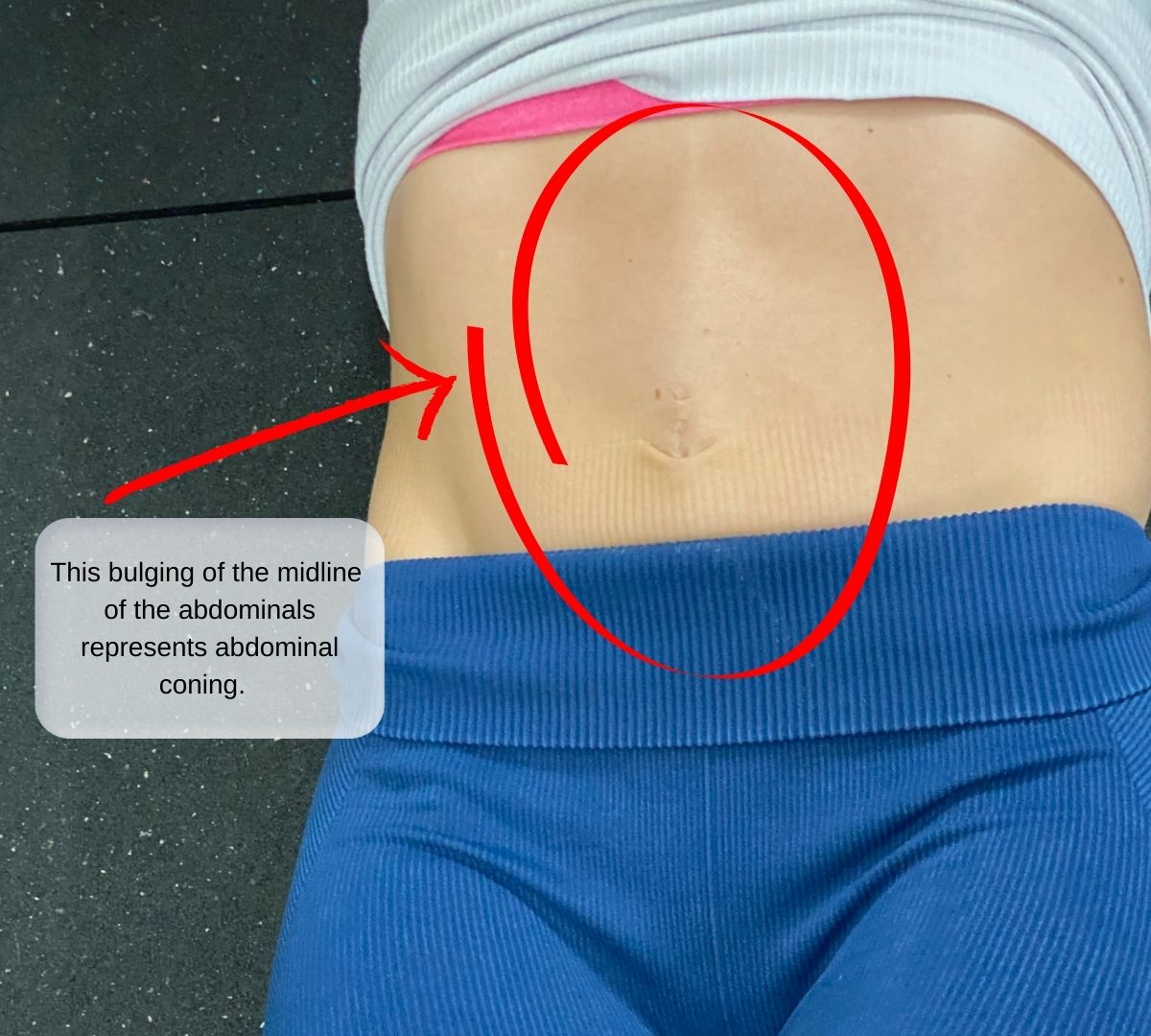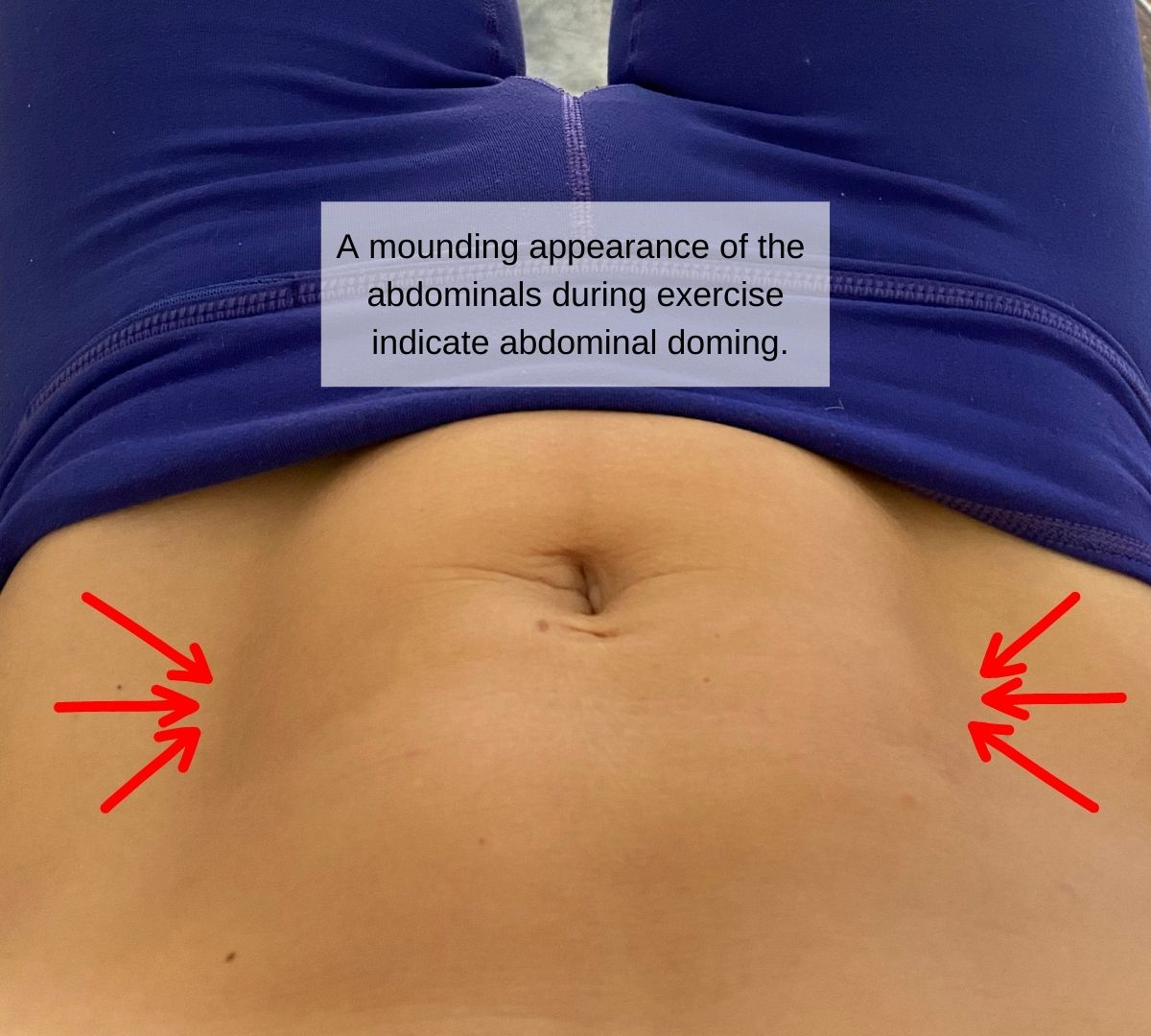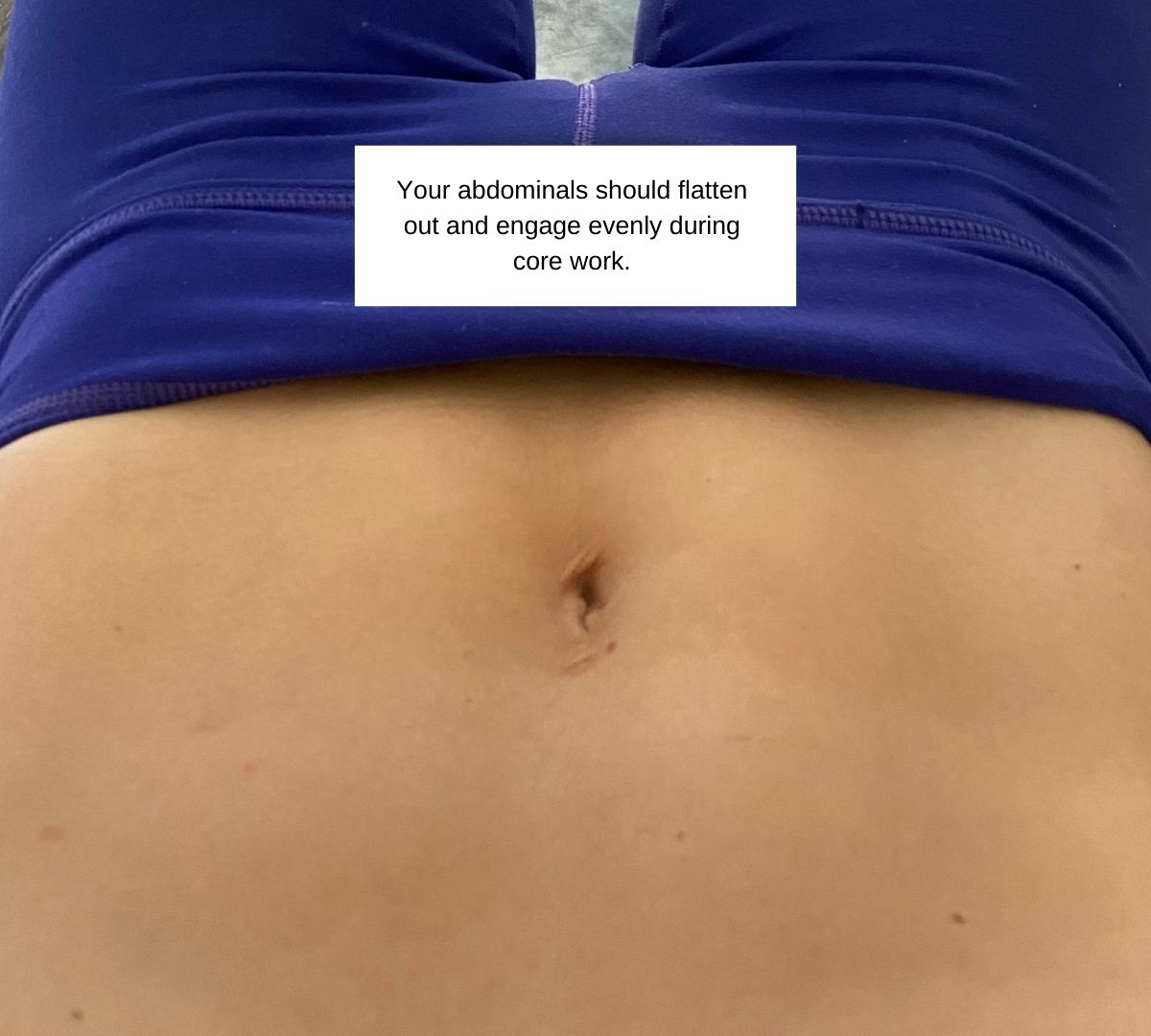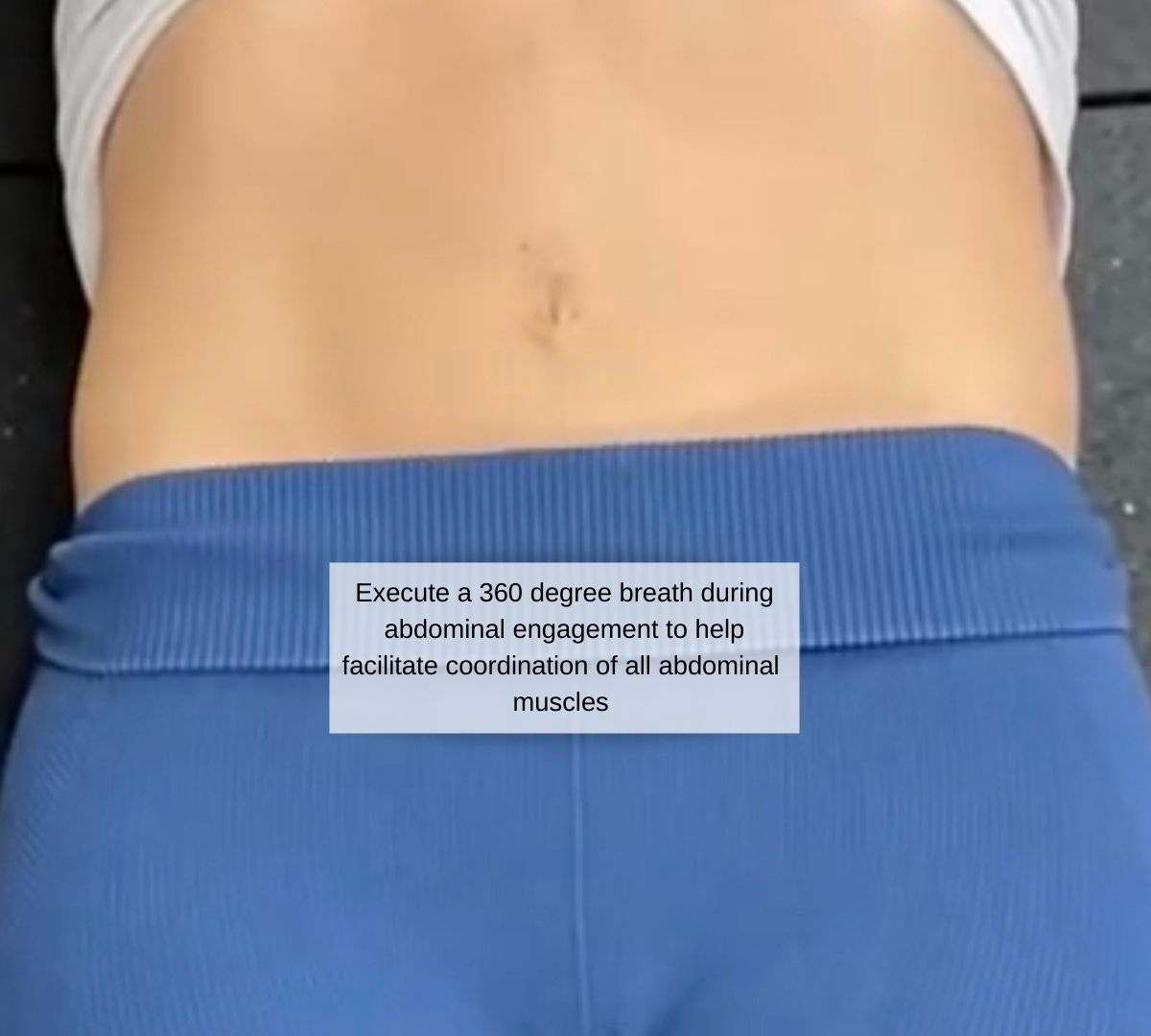No products in the cart.
How to Start a fitness journeyIf you are new to fitness and feel overwhelmed and confused, you are not alone. With so
Work with us 1 on 1 to reach your goals Apply Now!
By: Deanna Holcomb
During pregnancy and postpartum your abdominals undoubtedly took many different forms. If you have ever had a baby before, you may feel like your stomach has never looked the same. Despite all the core work you do, it might feel impossible to change the look of your stomach. Diastasis recti, or the separation of your rectus abdominus muscles that commonly occurs during pregnancy, can persist long after your baby is born. In fact, women with adult children can still suffer from the impacts of diastasis. Children, men, and women who have never had babies before can also have diastasis recti. This condition is simply your abdominal muscles not working together to handle the pressure that exercise or movement creates within the body. Having diastasis does not mean that abdominal work is off-limits, it just means that you need to work to your level and make sure that the exercise you are doing is actually working for you.
When performing any exercise, proper form is key. Having good form is the difference between progressing, or increasing your chance of injury. You should never feel like a failure if you need to modify an exercise. In fact, modifying is how you can workout smarter, not harder. Your body is very good at doing what is asked of it. If you attempt to do an exercise, your body will likely be able to do it in some capacity, however, if the muscles you are intending to work are not strong enough to complete the exercise, “cheater” muscles are likely to kick in.
We like to call these muscles “cheaters” because they are only supposed to support the move, not take over like they often do. These muscles are not strong enough to do the exercise well and often end up overworking, leading to injury, pain, and tightness. No one wants that! If your back hurts during abdominal work, it's likely acting as a “cheater” muscle. The same goes for hip flexors that often take over for a weak core. The list can go on and on depending on the exercise.
This is especially true of postpartum core work. Even if you are brand new postpartum, your body can likely perform a plank, or a crunch, however, it doesn’t mean that the right muscles are working with correct coordination. This lack of coordination and pressure management can cause issues like diastasis recti to become worse. In addition, poor form with core work can lead to excess pressure on your pelvic floor. This excess pressure can cause or worsen prolapse, leaking, and other forms of pelvic floor dysfunction. This is why it’s so important to approach abdominal exercises slowly and carefully postpartum, and make sure you can properly coordinate all your muscles together to handle the pressure.
So how do you know if your form is right? Once you have established proper breathing and start moving on to loading your core through more challenging exercises, we can see how our abdominal muscles look when we perform the exercise.
When visually looking at abdominal muscles during exercise, it is important to watch for abdominal coning and/or doming. Abdominal coning is when you can visually see a hot dog-like bulge in the midline of your stomach. This is an indicator of diastasis recti, or a separation of your rectus abdominal muscles. In addition, coning means that you are not handling the pressure well for that particular exercise.


Similar to abdominal coning is doming. This occurs when you notice a mound in the middle of your stomach. This indicates that your rectus abdominal muscles are dominant and your transverse abdominals are not showing up. In core work, it is important for your muscles to work in coordination, which is a main focus for postpartum exercise. Doming does not necessarily mean that you have an open diastasis, however, it does indicate that your core muscles are not working in coordination with one another.
If you notice either coning or doming, it doesn’t mean automatically that the particular exercise is off-limits. Make sure you are getting good breath with your abdominal work. Try the exercise again with a strong 360-degree breath. Make sure your exhale is through your mouth on the hardest part of the exercise. Check your abdominals again and see if you can manage the pressure better when timed with breathing. If you still notice coning and/or doming, it's time to regress a bit to a version of the exercise that’s a bit easier. Go to a level where you no longer have any coming or doming (or it is very slight). Work at that level until you are able to perform the exercise with control, and then make it a little harder.


Not everyone will be able to visually see coning and doming. If it’s not possible to visually see this on your body, try and use your hand to feel. Check the midline of your stomach as you perform core work. Note any bulging down the midline of your stomach. Also, feel the middle of your stomach and move toward the outside, pressing gently to feel the muscles. See if you notice any doming or the appearance of a “bread loaf”. These are all indications that your abdominal muscles are not working in coordination, and you likely have unresolved symptoms of diastasis recti.
A regression may look like going from both legs to one leg at a time. Or taking a floor plank up to a wall or elevated surface. Remember to modify to your level so that the muscles can work properly. Finally remember it is so important to master your 360 breath. This is the basis for all core work and should be the first thing you work on postpartum. Check out the video below for some basic breathing practice.
If you aren’t sure where to start, check out this prior post for some of our favorite early postpartum moves. Remember that healing takes time and it is never too late to make your core stronger and more functional!
Tags
Core exercises for moms, diastasis recti, Personal Training for moms, Postpartum fitness
How to Start a fitness journeyIf you are new to fitness and feel overwhelmed and confused, you are not alone. With so
As a busy mom, it can be challenging to find time to focus on your own health and fitness goals. With so
Have you ever asked yourself if you have an effective workout routine when looking at your fitness habits? Fitness for moms needs
Check out our programs and pricing!
Session expired
Please log in again. The login page will open in a new tab. After logging in you can close it and return to this page.